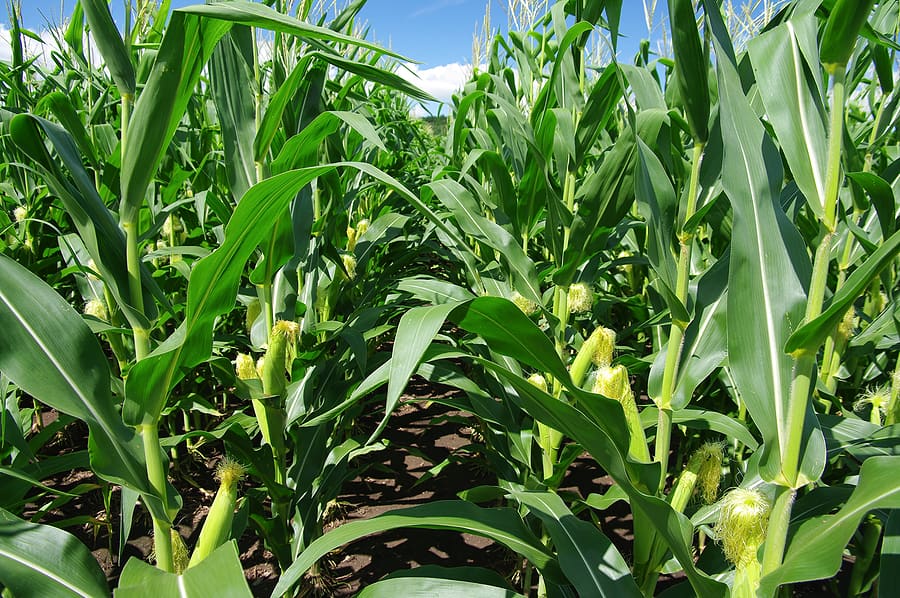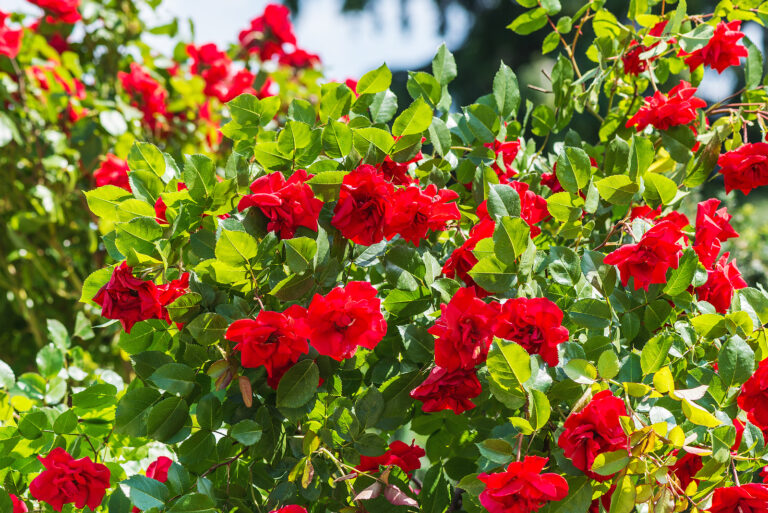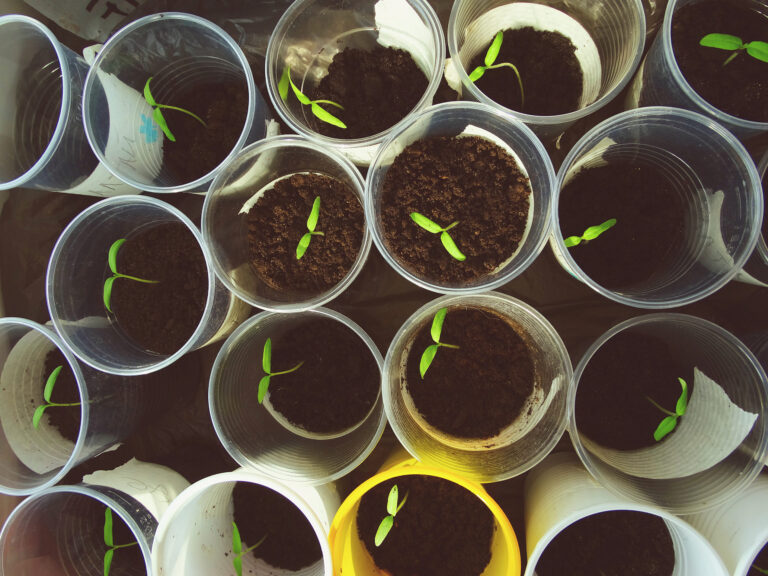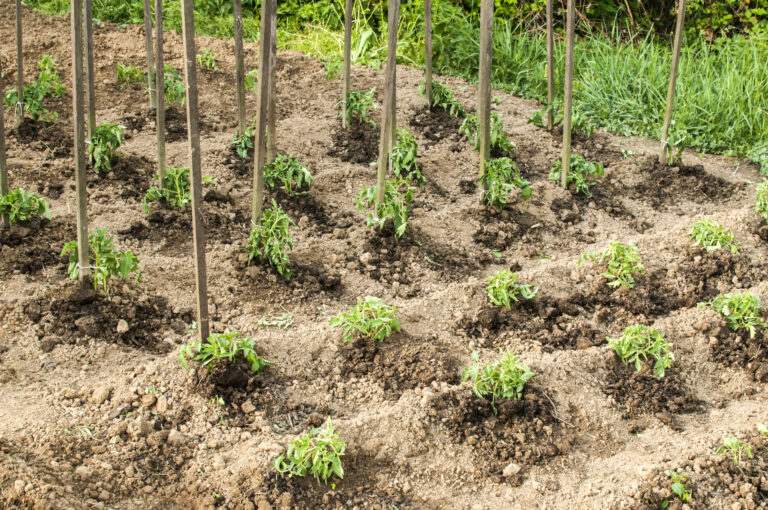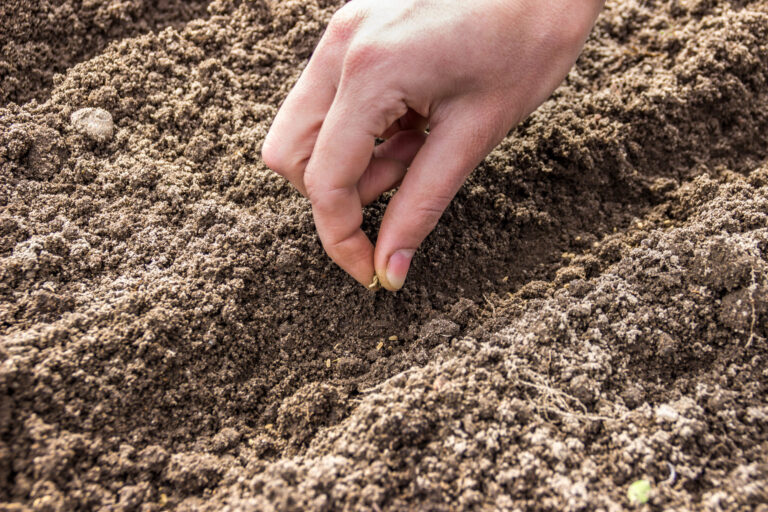August Vegetable Garden Things To Do
August is a month of endings and beginnings in the kitchen garden. In nature, change is about. Summer will begin to fade in many gardens during August giving way to autumn and cool weather. In hot summer regions, heat may continue for several more weeks and then give way to warm but not hot temperatures. In these regions the “second spring” garden will come on; in the second spring garden you can grow again all of the crops you planted in spring but instead of starting seeds indoors you can direct sow seeds in the garden.
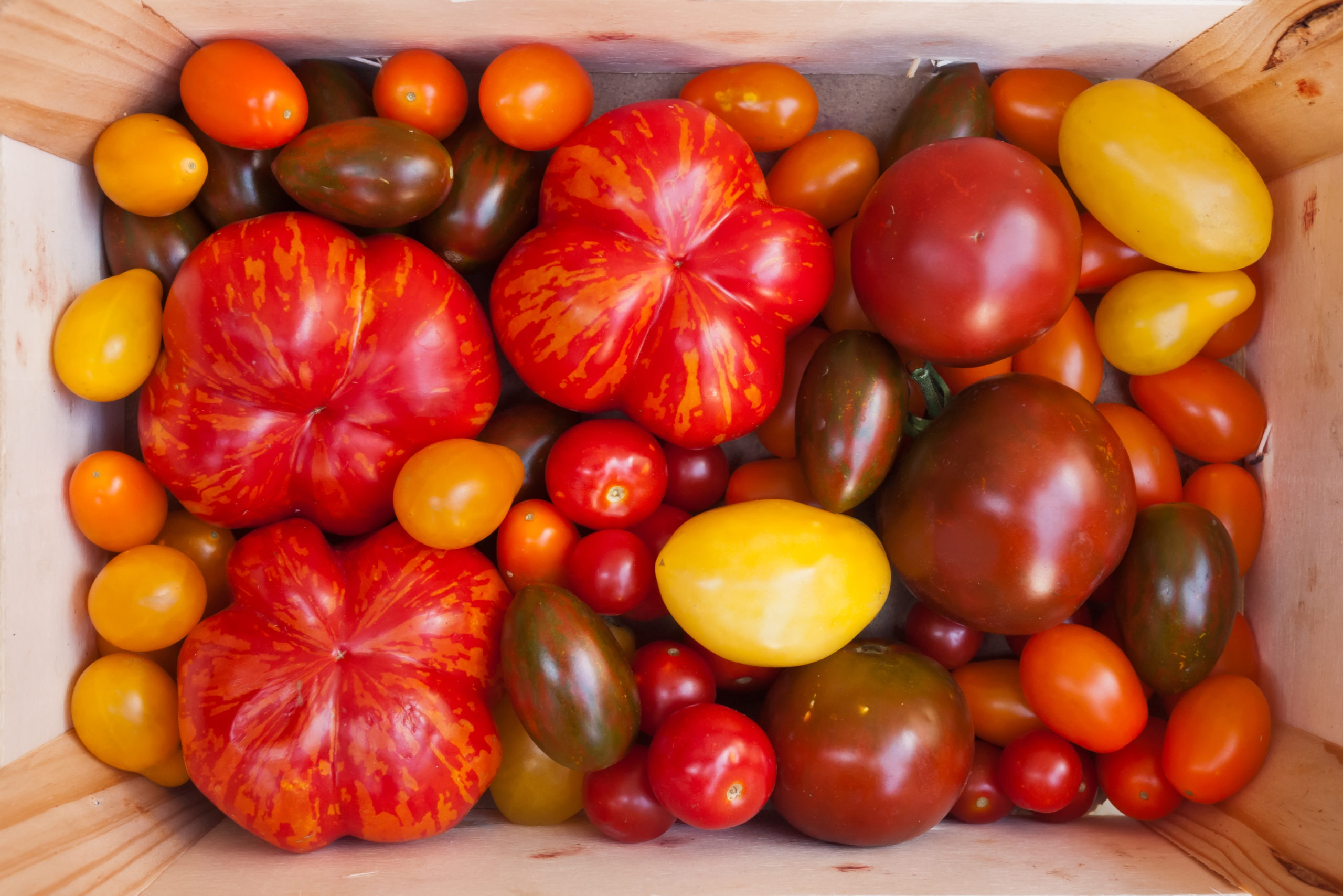
Warm and cool weather crops at the end of summer
August is the month to begin planting cool-season crops for fall and even winter harvest. As temperatures wane at the end of summer and the length of daylight decreases, cool-season vegetables are the right crops to plant. These are the same crops planted in late winter and early spring for late spring harvest. Some gardeners call the late summer into the autumn vegetable garden “the second spring garden.”
Vegetables are generally divided into warm-season and cool-season crops. Cool-season crops prefer cooler temperatures. These are the leaf and root crops: beets, cabbage, carrots, lettuce, and spinach. Leaf and root crops benefit from cool weather; they use shorter days to direct their energy into leaf and root formation and don’t bother with flowering and seeding or fruiting.
Most warm-season crops are harvested in summer for their fruit: tomatoes, squash, peppers, eggplant, and melons for example. These crops require a lot of heat and long days to mature and become tasty.
Also of interest: Cool Season Vegetable Varieties and Vegetable Garden Growing Season
Days in the growing season
Use the number of days in your garden’s growing season to determine which crops still have enough season left to mature to harvest. The growing season is the number of days between the last frost in spring and the first frost in autumn. Seeds that go into the ground now need time to germinate and grow. If there are 60 to 90 days of temperatures greater than 70 degrees F, you have a lot of growing season left for warm-weather crops. If temperatures will drop into the 60s or 50sF in the next 60 to 90 days, you should plant cool-season crops now.
If you are unsure of how many growing days you have left this season, check the frost dates for your area online or call the nearly Cooperative Extension Service or master gardeners in your area. They can tell you when to expect the first frost of autumn or winter.
Also of interest: Average Date of the Last Frost and Days in the Growing Season
Planting the autumn garden
When planning the autumn and winter garden, check the date of maturity on your seed packets against the average date of the first frost in your area. Add at least 2 weeks and up to 4 weeks to that number and count backward from the average first frost date to arrive at your planting date for that crop. Plants grow a bit slower as summer fades into autumn and the sun’s intensity decreases. So allow some growth time by adding a few weeks to the maturity date on your seed packets.
You may have plenty of time for more warm-weather crops in your region (after all there are only 1 or 2 days of frost each year in San Diego, for instance), or time may be very short (there are on average just 60 frost-free days each year in Telluride, Colorado, with the average first frost date arriving about August 27).
Also of interest: How to Grow a Fall Vegetable Garden
Garden Planning Books at Amazon:
- Vegetable Garden Almanac & Planner
- Kitchen Garden Grower’s Guide Vegetable Encyclopedia
- Vegetable Garden Grower’s Guide
- Tomato Grower’s Answer Book
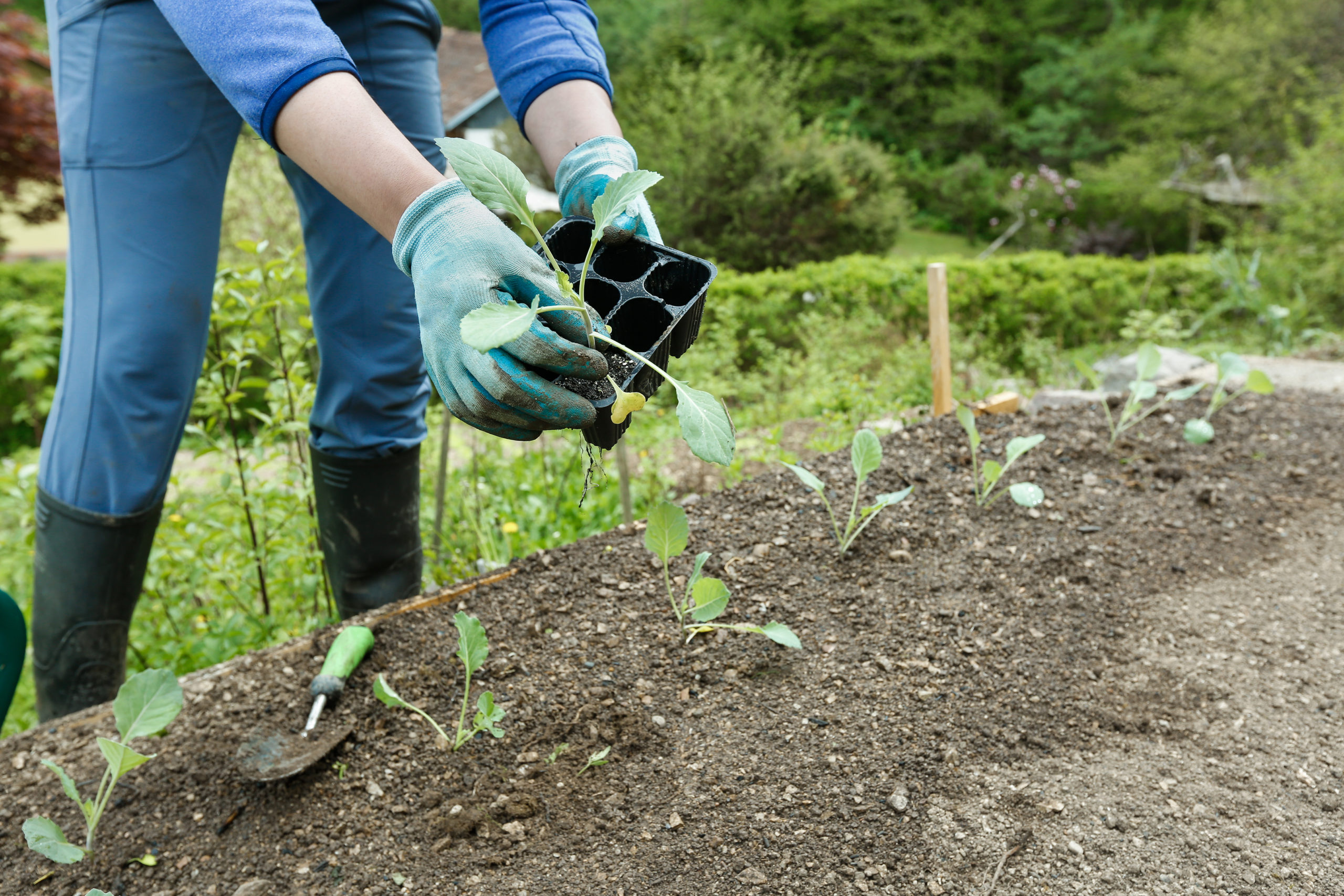
Crops to plant in late summer
If you do not expect your first frost until mid-autumn, there is time to plant second and third crops. Check the days to maturity for each crop you want to grow; add a week or two to the days to harvest to factor in the shortening of days as autumn approaches. Choose crops that can come to harvest before frost or crops that do not mind being touched by frost or cool weather. Choose quick-maturing crops.
Spinach, lettuce, arugula, Chinese greens, Swiss chard, kale, beets, carrots, peas, radishes, and turnips can be sown now. Most seeds will readily germinate in the garden now because the soil holds heat well into autumn; warm soil (in the 70°s) is ideal for seed starting, as long as the weather is not too hot. Put out transplants if there is not enough season left to grow from seed. In long-summer and warm-autumn regions protect transplants from lingering heat; use shade and water to keep developing crops cool.
In regions where frost will not come until late autumn, start celery, broccoli, cauliflower, cabbage, and Brussels sprouts for setting out in the garden in late September and early October. In cooler regions, these crops may need frost blanket protection before harvest.
More at Seed Starting Guide
Planting seedlings in late summer
One way to cut short the number of days a plant will need in the garden is to transplant seedlings into the garden rather than growing from seed. Garden centers may still have warm-season seedlings available and are very likely to have cool-season seedlings on hand now. These plants already have a 2 to 6-week head start over seeds you might sow today.
If you have not started seeds already, check the garden center for seedlings now available. Mark your calendar for next year to start seedlings for the autumn garden beginning in mid-July. If frost will not come to your garden until late October, November, or December, you can sow seeds during August.
Reliable crops for planting in August include beets, bush beans, carrots, collards, mustard, onions, radish, spinach, and turnips.
Vegetables for fall harvest
Fall crops that can tolerate cool temperatures and mature quickly include small, round beets, short carrots, radishes, winter radishes, bunching onions, mustard greens, leaf beets, Swiss chard, kale, and spinach.
Brussels sprouts seed starting
Start Brussels sprouts for harvest early next year; sow seeds ½ inch deep in drills 6 inches apart. Started indoors these can be set out in six weeks.
Brussels sprouts in the garden now can be left in place until after cool weather arrives; remove the tip of the plant when lower sprouts are ¾ inch in diameter about four to eight weeks before the desired harvest; this will trigger the development of sprouts higher up.
Cabbage seed starting
Start cabbage indoors now; sow seeds of spring cabbage ½ inch deep in drills 6 inches apart. A spring and fall crop in northern regions is a winter crop in the South. (Early or spring cabbages mature in 50 to 60 days from transplanting; mid-season cabbages mature in 70 to 85 days from transplanting; late-season–called storage cabbages–require 85 days or more after transplanting.) Early-maturing cabbages are milder flavored.
Celery seed starting
Celery prefers daytime temperatures between 65°F and 75°F. It requires 80 to 130 days to harvest depending upon the cultivar. Begin to harvest self-blanching celery as soon as stalks are large enough to eat. Celery should come out of the garden before the first frost.
Autumn garden planting zone-by-zone
Here are some crop recommendations for planting the late summer or autumn kitchen garden now. These suggestions are divided into 4 major geographical areas: North and East and Midwest (zones 2 in the northernmost areas to 6 along the coast), the South (zones 7 in the north to 10 in the far south), the Southwest and California (zones 7 in the coolest areas to 11), and the Northeast (zones 5 in the highest elevations to 8 along the coast).
North, East, and Midwest
Check the number of frost-free days left in your area. You may have time to plant beets, chard, endive, kale, late kohlrabi, lettuce, mustard, winter onions, radishes, and spinach. Also in some areas: carrots, beans, chard, corn salad, endive, kale, broccoli, Brussels sprouts, late cabbage, Chinese cabbage, cauliflower, celery, and late peas. You must hurry these into the garden if starting from seed. Herbs can be planted in pots: chives, parsley, mint, and thyme.
South
Start winter vegetables in seedbeds or undercover for planting in early September. Both warm and cool-weather crops can still be planted in the August garden in The South: broccoli, Brussels sprouts, bush and pole beans, cabbage and Chinese cabbage, cauliflower, chard, sweet corn, kale, leaf lettuce, Bermuda onions, fall peas, radishes, rutabagas, salsify, spinach, winter squash, tomatoes, turnips, and pumpkins. Next month you can begin to plant autumn salad greens.
Southwest and California
In many areas, there is plenty of warm weather to keep the warm-weather crops going in successive plantings; in the warmest regions and reverse-season areas, set out bush beans, cucumbers, eggplants, limas, southern peas, peppers, tomatoes, and watermelon. You can also plant basil, string beans, beets, broccoli, carrots, cauliflower, chard, sweet corn, dill, endive, kohlrabi, lettuce, okra, potatoes, rutabagas, summer squash, winter squash and pumpkins, spinach, and turnips. Where there is less time until the first frost, plant radishes, cabbage, Brussels sprouts, chard, kale, leaf lettuce, fall peas, late potatoes, salsify, and late spinach. Irish potatoes can go into the garden now. Towards the end of August, winter vegetables can be sown in seedbeds or undercover.
Northwest
Be sure to check the number of frostless days left in your area. You may have time for beets, broccoli, cabbage, carrots, cauliflower, endive, leaf lettuce, mustard, parsley, peas, spinach, and turnips. Check the seed packets for “fall” and “late” varieties; they are quicker maturing plants. Late cabbage, late cauliflower, Brussels sprouts, and broccoli will probably have time to mature.
August planting by zones
Temperate regions–Zones 7-9
Sow beans, beetroot, broccoli, Brussels sprouts, cabbage, carrots, cauliflower, celery, chicory, cress, eggplant, endive, kohlrabi, leeks, lettuce, mustard, spring onions, parsnip, peas, potato tubers, radish, rhubarb crowns, rutabaga, salsify, shallots, spinach, Swiss chard, and turnips. Other vegetables for temperate regions started in August that are not as reliable but worth attempting are potatoes, rutabagas, cabbage, Chinese cabbage, endive, Swiss chard, and corn salad.
Cooler northern regions–Zones 3-6
In the northern regions of the Northern Hemisphere, the weather may be hot in August but the growing season is growing shorter. Crops that will mature in the coolness of autumn can be planted now. Sow snap beans, Chantenay carrots, Chinese cabbage, and endive. If you didn’t have any luck with spring-sown peas earlier, try them now. The cool nights of the next month should be good for them while they are still growing. Sow broad beans, broccoli, Brussels sprouts, cabbage, carrots, chicory, cress, endive, kohlrabi, leeks, lettuce, spring onions, parsnip, radish, rhubarb crowns, rutabaga, salsify, shallots, spinach, Swiss chard, and turnips.
Tropical and sub-tropical southern regions–Zones 10-12
Plant artichoke suckers, beans, beetroot, broccoli, cabbage, cape gooseberry, capsicum, carrots, celery, Chinese cabbage, cress, cucumber, eggplant, kohlrabi, leek, lettuce, marrow, melons, mustard, okra, onions, spring onions, parsnip, potato tubers, pumpkin, radish, rhubarb crown, rutabaga, sweet corn, sweet potato, Swiss chard, tomato, turnip, and zucchini
In sub-tropical and tropical regions from Southern California and South Florida south into Mexico and Central America, you can plant late potatoes, tomatoes, beans, beets, carrots, Brussels sprouts, celery, chard, cucumbers, and turnips this month.
Also of interest: How to Grow a Fall Vegetable Garden
Late summer harvest tips
The late summer garden harvest includes onions, potatoes, garlic, shallots, leeks, cabbages, celery, eggplant, pepper, and tomato.
Harvest each crop as soon as it starts to bear edible-sized vegetables. Don’t wait for crops to become oversized; you will sacrifice flavor. Keep picking so the plant will keep producing. Record your harvest dates for each crop to use in planning the coming seasons.
Tomatoes, melons, winter squashes, and pumpkins will come to harvest in late summer. About six weeks before harvest, remove the growing tips of tomato plants, melons, winter squashes, and pumpkins. Pinch out the tip of tomato vines about two leaves above the top truss of tomato flowers. This will channel the plants’ energies into fruit development and away from leaf growth.
Excessive heat and over-watering can reduce the sweetness of tomatoes, cantaloupes, and melons. Shade plants from too hot weather and reduce water in the last week or two before harvest. Cool or cloudy weather can also result in less sweet fruit.
Vegetables coming to harvest in August include beans, carrots, green chilies, corn, eggplant, lettuce, melons, pumpkins, sweet bell peppers, tomatoes, turnips, and zucchini.
Crops at the peak of their season in August include avocados, basil, beets, blueberries, broccoli, cabbages, cantaloupes, carrots, chard, chipotles, cilantro, corn, dried fruit, eggplants, eggs, figs, garlic, goat cheese, Gravenstein apples, green beans, herb starts, honey, leaf lettuce, leeks, lemon cucumbers, local fresh and smoked seafood, melons, mushrooms, nectarines, new potatoes, nopalitos, olives, olive oil, onions, yellow and white peaches, pickling and salad cucumbers, plums, radishes, raisins, raspberries, salad mix, spinach, strawberries, string beans, summer squash, tomatoes, watermelons, and fresh herbs including chives, dill, French tarragon, garlic chives, marjoram, parsley, rosemary, Russian tarragon, oregano, and culinary bay leaves.
Fruits and nuts coming to harvest in August include almonds, apples, late apricots, avocadoes, blackberries, cape gooseberries, gooseberries, grapes, figs, hazelnuts, melons, mulberries, nectarines, peaches, pears, plums, raspberries, strawberry guavas, strawberries, and tamarilloes.
When to harvest crop-by-crop
Click on the following crops to get full harvest tips.
Corn
Corn pollination can be hampered by hot and dry or wet and rainy weather. Pollination affects how well the ears fill out; if pollination is incomplete, kernels and ears will be underdeveloped. Watering is critical during ear development. Most cultivars are ready for harvest about 20 days after the silks (also called “tassels”) appear.
Pick sweet corn when the tassels on the end have withered and the seeds are firm and exude a milky substance when pressed with your thumbnail. Gather the ears by breaking them off the stems.
Corn earworms can be a problem; they commonly feed on the top kernels in an ear. Prevent earworm damage by placing a drop or two of mineral oil into each ear when silks first emerge.
Cucumber
Pick slicing cucumbers when 6 to 8 inches long; harvest picklers when 3 to 4 inches long. Cucumbers left on the vine too long will become bitter and seedy. Harvest cucumbers regularly to keep the plant producing new fruit. Pinch off blossoms a month before the first expected frost to channel energy into existing fruit.
Eggplant
Pick eggplants while they are still shiny. Bigger eggplants are not better-tasting eggplants. Pinch back new blossoms three weeks before the first frost so that the plant’s energy is channeled into existing fruit.
Garlic
Lift garlic when three-quarters of the tops have yellowed. Dig one or two plants first and check to make sure cloves are well segmented and easy to separate; if not, they need more time. Garlic harvested with green tops will not store well. Cure bulbs before storing them by spreading bulbs in a single layer on a screen in a warm, dry, airy place out of the sun. Bulbs will cure or dry in two to three weeks.
Lettuce
Sow lettuces for cutting in autumn and early winter. Sow the seed ¼ inch deep in drills 6 inches apart; thin seedlings from 8 to 18 inches apart, depending upon the cultivar. For a spring lettuce crop to over-winter without protection plant to set out the cultivars ‘Winter Density’ or ‘Arctic King’ in early October.
Melons
Muskmelons and cantaloupes will develop small cracks where the stem joins the fruit as ripening occurs. Near ripeness, the netting effect on the skin will become more pronounced and the netting lines will turn from green to tan as the fruit ripens. Pick the fuzzy ends off vines to concentrate growth and flavor. Press your thumb at the fruit-stem junction; the stem will separate from the fruit with a slight pull if the melon is ripe.
Onions and shallots
When the top stems of bulbing onions and shallots are three-quarters dry and falling over, bend the tops over further. Brush the soil away from the tops of the bulbs to allow them to fill out and dry in preparation for harvest. Bulbing is hastened not by the bending over of the stems but by long days.
Parsnip
Parsnip and salsify can come to harvest in slightly dry soil; water only if the soil is very dry. Dig parsnip and salsify as soon as they are large enough to use; waiting until after the first few touches of frost will concentrate flavor.
Pepper
For the best growth and ripening of peppers, remove the central, top pepper on each plant. This will increase your yield. Allow not peppers to ripen on the plant for maximum “hotness.” Sweet peppers can be picked “green”–meaning immature or after reaching full color.
Potato
Early potato baby potatoes can be harvested small, just seven to eight weeks after planting. Harvest main crop potatoes about two weeks after the tops have been yellowed and browned by the first frosts. Complete the potato harvest before the first hard frost.
Pumpkin and winter squash
Pumpkins and winter squash will need regular watering to come up to size before harvest. Turn each fruit just a little regularly to prevent a flat side at harvest. Remove the flowers on pumpkins and winter squashes plants about 8 inches back from the growing tips of vines; this will help increase the size of fruits.
Summer squash and zucchini
Summer squash and zucchini should be picked before the rind hardens.
Sweet potato
Sweet potatoes are drought tolerant but regular, even water leading up to harvest will produce the best-sized roots. Sweet potatoes can be lifted as soon as they are large enough to use; for the best flavor, leave tubers in the ground until the tops are killed by a light frost or daytime temperatures drop into the 50sF.
Tomato
Tomatoes ripen from the bottom; a tomato can be fully ripe before it becomes fully colored. When the skin begins to lose its waxy smoothness, even if you don’t see color on the shoulders, the tomato is ripe. The texture of a ripe tomato will be just between firm and soft. Picked too early a tomato will be less sweet and less juicy; picked too late, the skin will be tough and the flavor flat. Tomatoes continue to ripen off the vine; to slow the ripening store the tomato in a cool location, 50° to 55°F.
Watermelon
Watermelon is ripe when thumped and you get a “thunk” sound. Stop watering watermelon when it starts to ripen to increase the sweetness. A ripe watermelon will be yellowish, not white, where it touches the ground; the tendrils on the stem near the fruit will be brown.
Herb cuttings
Take cuttings of bay, hyssop, lavender, mint, rosemary, rue, and sage, and insert them in sandy soil in open ground or in a pot filled with sand. Keep cuttings out of direct sun and wind for the first two weeks. Water cuttings in the evenings until the roots have formed.
More garden tips for August
Tomatoes
Continue to feed tomatoes and watch for pests and diseases. Water tomato plants frequently to prevent the development of blossom-end rot. Remove excessive leaf growth from tomatoes, side shoots, and yellowing leaves. Stop outdoor tomatoes when four or five trusses have set by pinching out new growth. At mid-month, remove flowers and buds from tomatoes to speed the ripening of fruit. (The same is true for squash.) More at: How to Ripen Tomatoes on the Vine
Feeding vegetables
Give warm-season fruiting crops–eggplants, peppers, tomatoes, and squash–a side-dressing of compost tea or manure tea. Add a cup or two of well-rotted manure or compost to a gallon and let sit overnight before watering around plants. More at: Fertilizer for Tomatoes, Peppers, and Eggplants
Sowing seeds
If you are planting in the heat of August, it is important to plant when the soil is moist. Cover the seed lightly with soil and use a mulch of grass clippings, straw, or paper placed over the seed beds until the seed germinate. This is important particularly when the weather is both hot and dry.
Prepare for season extension
Prepare for frost In short-season regions, clothes, floating row covers, and plastic tunnels can be used to extend the growing season past the first frost. Season-extending devices should be readied to protect plants from early frost. Be ready to cover tomatoes, peppers, beans, and other tender crops from frost. A plastic tunnel can extend your growing season by 4 to 8 weeks. More at: Vegetable Garden Season Extension
Storing herbs
Store dried herbs before they have had time to re-absorb moisture from the air (dry by spreading leaves or seeds in a single layer in a dry location out of direct sunlight). Rub dried herbs between your hands to be rid of stems and other chaff and then store them right away to prevent dust collecting. For short-term storage, seal herbs in a plastic bag and refrigerate; for long-term storage, seal herbs in a glass jar and store in a dark place.
Cut herbs to freeze and dry for winter use, preferably before leaves become too old or plants begin to flower. Collect herb seeds when ripe. Pot up herbs for winter use, or take cuttings or divide perennial herbs to start new plants. Take cuttings of bay, lavender, mint, rosemary, rue, and sage; lift and divide clumps of chives. More at: Grow Herbs Indoors in Winter
Divide chives
Chives need to be divided about every four years; lift the clumps and cut into segments with a sharp knife, taking care that each segment retains a number of roots. Re-plant out new clumps 12 inches apart.
Seed drying
Seeds from chervil, dill, fennel, anise, and coriander can be harvested for drying in the next few weeks. Harvest seeds when they are dry but before they drop to the ground. Place a paper bag over the seed head and give a shake to allow the ripe seeds to loosen and drop into the bag; you can also tie the bag around the seed head and let the seeds drop as they will. Lay seeds out on clean paper in a warm, dry place to allow them to finish drying. Gather the dry seeds of chervil and re-sow at once in 1-inch deep seed drills.
Leeks and onions
When the middle of the month comes, mound soil around stems of leek to blanch and blanch early celery by using paper tubes. To hasten onion ripening, bend over tops if they are beginning to wither. In late August, in the cooler regions sow spinach and mustard.
Fruits in August
Brambles and berries
Following harvest, cut fruited raspberry, blackberry, loganberries, currants, and gooseberry canes back to ground level, and carefully tie new canes that have not fruited to supports. Take hardwood cutting from black currants and gooseberries. Root them in sandy soil in a sheltered spot. Plant black currants, red and white currants, and blackberry and raspberry canes from now until early spring provided that the soil is not too cold to too wet. Shallow-rooted blueberries should be well mulched and watered. Protect grapes from birds. More at: Raspberry, Blackberry, Currant, Gooseberry
Strawberries
Clean up strawberries once they have finished fruiting. Remove old leaves and unwanted runners. Runners can be detached from parent plants and transplanted or rooted in pots. Potted runner plants can be set out in the garden. Water all well. Replace worn-out mulches. Keep watering everbearing strawberries; replenish their mulch as needed. In short-season regions, have cloches ready to extend the season for late-fruiting plants. More at: Strawberries
Apples
Thin apples and support heavily laden trees. Spray developing fruit with calcium nitrate. Start picking early apples; early-ripening apples do not store well, so eat them now. Water apple trees regularly and deeply to decrease the risk of bitter pits. Remove and dispose of apples showing signs of pest infestations. Control woolly aphids on apple trees; apply grease bands to trunks. Dispose of fallen leaves from scab-infected apple trees. Place netting to cover and protect developing fruit from birds. Summer prune cordon and espalier apples. More at: Apples
Cherries, plums, apricots, nectarines, and peaches
Start picking early plums. Prune cherries, plums, apricots, nectarines, and peaches when the harvest is complete; cut out dead, diseased, broken, and crossing branches. Prune espalier and fan-trained fruit trees; cut lateral growth toward the wall or fence by half. Rake and dispose of fallen leaves from scab-infected pear trees and rust-infected plum trees. Keep the orchard and area below fruit trees clean to interrupt the life cycles of pests. Protect fruit against birds. Plant peaches and nectarines. See the articles on each of these fruit trees: Cherry, Plum, Apricot, Peach/Nectarine
Cold frame and greenhouse
Add extra shading to greenhouse glass if necessary. Clean and disinfect the greenhouse and get ready for winter. Check insulation and heaters to make sure the minimum temperatures are reached (be sure you have a minimum-maximum thermometer). Ventilate on warm days as necessary. More at: Vegetable Garden Cold Frame
More about August
August was the sixth month of the year in the early Roman calendar–called Sextilis, which means sixth–until Emperor Augustus came along and rearranged the calendar and named the month after himself.
In the temperate regions of the Northern Hemisphere, August is the height of summer. Even though the longest days of the year are past, August is one of the hottest months of the year.
Rather than tossed salads, August is the time to enjoy relish bowls of fresh, young, raw vegetables. Cauliflowerets, strips of sweet pepper, sticks of cucumber, and slices of tomatoes can be added to scallions, carrots, and radishes.
This is the time for picnic suppers, not table dinners. Put aside the roasts and walk away from the oven. Serve ham slices or shish kebabs broiled on the grill. Garden-fresh vegetables served on the side and fresh fruit for dessert are perfect now.
While goldenrod, wild asters, and other late summer flowers are blooming on the prairies now, far northern high mountain regions are experiencing chilly nights and even frost. While the fields and woods are full of insects, some birds are nearly ready to fly south.
Garden Planning Books at Amazon:

